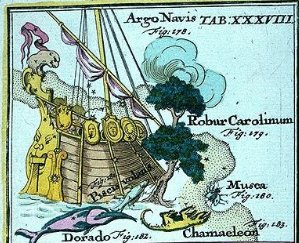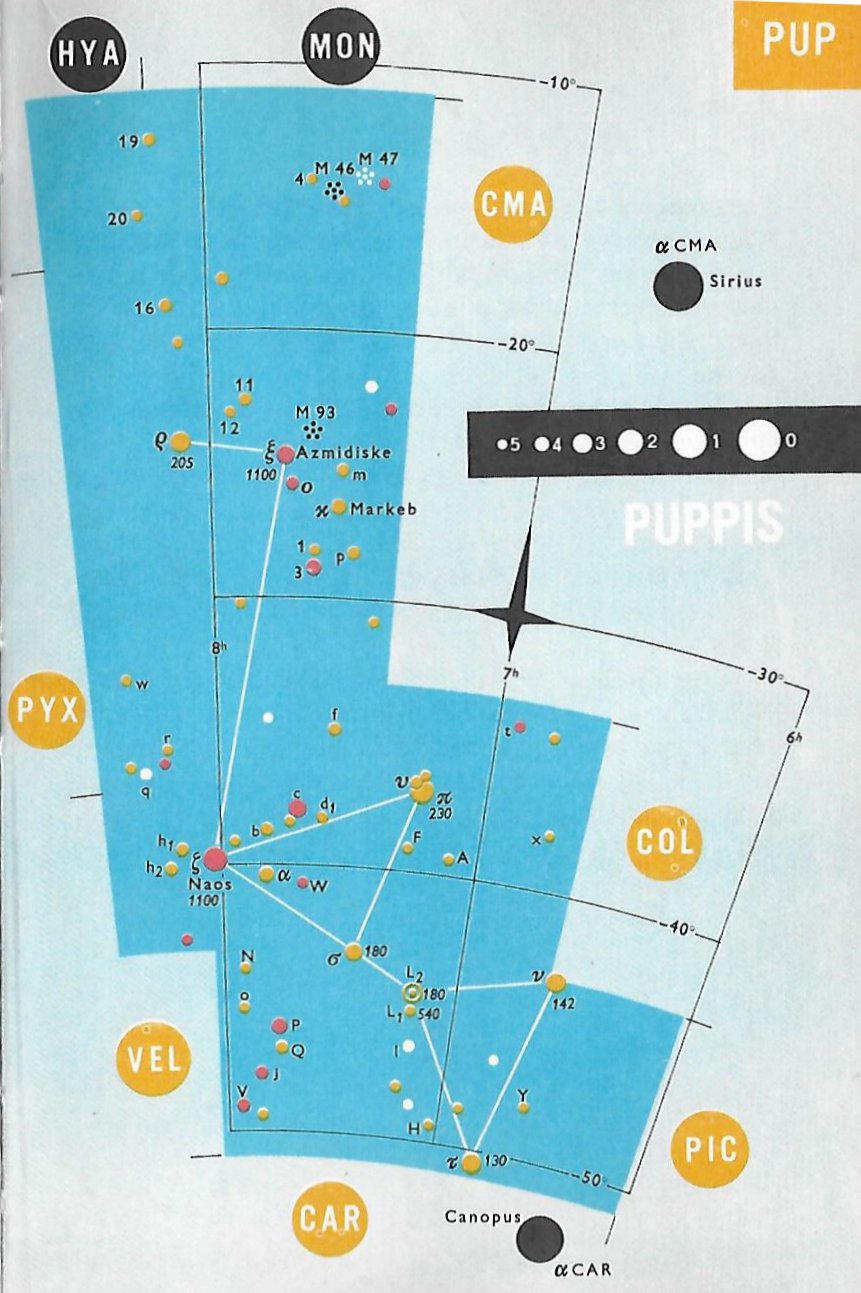The measures (me, numbers) of Argo Navis - presumably the remnants of the ancient God Boat - ought to be counted from Canopus (Eridu), I think: ... In the inscriptions of Dendera, published by Dümichen, the goddess Hathor is called 'lady of every joy'. For once, Dümichen adds: Literally ... 'the lady of every heart circuit'. This is not to say that the Egyptians had discovered the circulation of the blood. But the determinative sign for 'heart' often figures as the plumb bob at the end of a plumb line coming from a well-known astronomical or surveying device, the merkhet. Evidently, 'heart' is something very specific, as it were the 'center of gravity' ... See Aeg.Wb. 2, pp. 55f. for sign of the heart (ib) as expressing generally 'the middle, the center'. And this may lead in quite another direction. The Arabs preserved a name for Canopus - besides calling the star Kalb at-tai-man ('heart of the south') ... Suhail el-wezn, 'Canopus Ponderosus', the heavy-weighing Canopus, a name promptly declared meaningless by the experts, but which could well have belonged to an archaic system in which Canopus was the weight at the end of the plumb line, as befitted its important position as a heavy star at the South Pole of the 'waters below'. Here is a chain of inferences which might or might not be valid, but it is allowable to test it, and no inference at all would come from the 'lady of every joy'. The line seems to state that Hathor (= Hat Hor, 'House of Horus') 'rules' the revolution of a specific celestial body - whether or not Canopus is alluded to - or, if we can trust the translation 'every', the revolution of all celestial bodies. As concerns the identity of the ruling lady, the greater possibility speaks for Sirius, but Venus cannot be excluded; in Mexico, too, Venus is called 'heart of the earth'. The reader is invited to imagine for himself what many thousands of such pseudo-primitive or poetic interpretations must lead to: a disfigured interpretation of Egyptian intellectual life ... In addition to Canopus being named α Carinae it was also 365 Carinae - obviously referring to the length of the year and to its role of marking (merkhet) from where to count.
However, the part above its water line (the visible part) would come later:
We can imagine this idea was expressed in the G text on its side b (presumably representing the night side where the stars were visible):
From FEBRUARY 1 to JANUARY 31 there were 365 days. From January 1 to April 5 there were 365 + 95 = 460 days. ... In China, every year about the beginning of April, certain officials called Sz'hüen used of old to go about the country armed with wooden clappers. Their business was to summon the people and command them to put out every fire. This was the beginning of the season called Han-shih-tsieh, or 'eating of cold food'. For three days all household fires remained extinct as a preparation for the solemn renewal of the fire, which took place on the fifth or sixth day after the winter solstice [Sic!] ... Day 355 (winter solstice north of the equator) + 6 = 361 = 19 * 19. Or in a leap year: 356 + 5 = 361 = 19 * 19. 355 (356) - 3 = 352 (353) = December 18 (*272) = *89 (June 18) + *183. There were 3 days from June 18 to June 21 (solstice). And from *95 (Canopus) to *380 (1h) there were *285 (= 364 - 79) right ascension days. (25h / 24h = ca 1.04 (= 8 * 13 / 100). ... Ecclesiastically, the equinox is reckoned to be on 21 March (even though the equinox occurs, astronomically speaking, on 20 March [*364] in most years) ...
... Moon returns to the same place in the sky after about 24 hours and 50 minutes, which means the tidal period will be half as long (12 hours and 25 minutes) ... 24h 50' corresponds to (24 + 50/60) * 365¼ / 24 = ca 380 right ascension days (= 364 + 16). Presumably the difference between 380 (Moon) and 364 (Sun) - which happened to correspond to the difference between when the star returned to visibility and its true heliacal position - motivated the addition of an extra cycle ...
The star at the 'Poop Deck' (Puppis) - viz. Naos - was 26 right ascension days after Canopus.
This suggests the Rei type of glyph here may have been used by the creator of the G text to represent the whole of Argo Navis:
|
|||||||||||||||||||||||||||||||||||||||||||||||||||||||||||||||||||||||||||||||||||||||||||||||||||||||||||||||||||||||||||||||||||||||||||||||||||||||||||||||||||||||||||||||||||||||||||||||||||||

.jpg)












